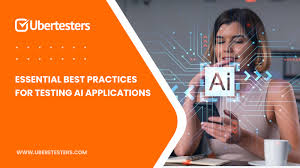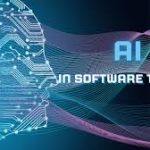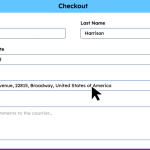With more and more AI making its way into products in various industries, testing such systems is no longer merely a technical formality it’s mission-critical work.
Whether you’re developing a recommendation engine, a self-improving chatbot, or fraud detection model, ensuring that the AI acts in a reliable and ethical manner is huge. Yet, testing AI applications is different from software testing as it used to be.
In this blog, we’ll explore the challenges of AI testing, outline the best practices, and recommend the right tools to streamline the process. We’ll also touch on real-world strategies that help teams build trust in their AI-driven systems.
Why Testing AI Is Different
Testing conventional applications typically involves checking for predefined outputs based on known inputs. But AI systems learn from data and adapt over time, making their behavior less deterministic and often unpredictable.
Unlike static codebases, AI models:
- Evolve continuously through training.
- May produce different results for similar inputs.
- Depend on large volumes of training data.
- Are sensitive to data drift and bias.
This makes AI testing a more nuanced challenge than validating traditional applications.
Key Challenges in Testing AI Applications
Testing AI systems isn’t like testing traditional software. From unpredictable model behavior to handling real-world data nuances, here are the biggest hurdles QA teams face when validating AI-powered apps:
Unpredictable and Non-Deterministic Outputs
AI models, particularly generative or deep learning-based ones, may provide varying results for a given input. This variability does not allow for defining the outcomes of interest, which further complicates testing and diminishes test coverage confidence.
Bias in Data and Models
The success of AI relies on the quality and recency of data. Data that is outdated, irrelevant, or noisy can mislead model predictions, and data pipelines validation for consistency is a perpetual struggle.
Data Quality and Freshness
The success of AI hinges on the quality and recency of data. Outdated, irrelevant, or noisy data can mislead model predictions, and verifying data pipelines for consistency is a continuous challenge.
Difficulty in Defining Ground Truth
Unlike traditional software, AI doesn’t always have a binary pass/fail outcome. Establishing what’s “correct” for predictions—especially for subjective tasks like sentiment analysis or image classification—is tough.
Lack of Explainability and Interpretability
AI models, particularly black-box models, tend not to give clear explanations of their outputs. This hinders debugging errors, holding them accountable, and achieving stakeholder trust much more difficult.
Handling Model Drift
As models are exposed to new data in production, their behavior may change over time—this is called model drift. Detecting subtle shifts in performance and retraining accordingly is a continuous effort.
Resource-Intensive Testing
Training and testing AI models require heavy computational resources, often with GPU acceleration. This slows down test cycles and makes rapid iterations expensive or impractical without proper infrastructure.
Difficulty in Reproducing Results
Due to the probabilistic nature of many AI algorithms, exact reproduction of test outcomes can be challenging—even with the same data and codebase. This complicates collaboration and debugging across teams.
Scalability of Testing Across Scenarios
AI apps often face a wide variety of real-world inputs that traditional unit tests can’t account for. Creating tests that scale across these edge cases without overfitting becomes increasingly difficult.
Security Vulnerabilities like Adversarial Attacks
AI systems can be tricked using adversarial inputs—slightly tweaked data that humans can’t differentiate, but machines misclassify. Testing for such vulnerabilities requires deep understanding and advanced techniques.
Changing Regulations and Compliance
With AI regulations evolving rapidly, compliance testing becomes crucial but tricky. Ensuring data privacy, fairness, and accountability under new laws adds another layer of responsibility to QA teams.
Integration with Non-AI Components
Most AI systems are part of larger applications that involve non-AI code. Ensuring that AI predictions don’t break business logic or user flows requires robust end-to-end integration testing.
Best Practices for Testing AI Applications
The testing of AI systems is more than just validating logic—it demands profound understanding of how models learn, develop, and respond to new information. This is how you construct a better AI testing strategy:
Start Testing Early in the AI Lifecycle
Begin testing right from data collection and preprocessing to catch quality issues before they impact training. This proactive approach helps maintain model accuracy and reduces rework in later stages.
Test Data, Model, and Output Logic Separately
Break down your tests across data pipelines, model behavior, and how predictions are interpreted. This separation helps isolate bugs faster and makes debugging less complex.
Define Clear Acceptance Criteria
Establish realistic, metric-based targets such as accuracy, precision, and recall. This keeps everyone on the same page regarding what makes a “good enough” model and prevents personal opinions.
Automate Testing in CI/CD Pipelines
Integrate automated AI tests into your deployment workflow to catch regressions early. Continuous validation also ensures model performance remains consistent after every retraining cycle.
Run Scenario-Based and Exploratory Testing
Simulate real-world usage patterns, edge cases, and unexpected inputs. This helps uncover blind spots in the model and strengthens its resilience against unusual situations.
Test for Bias and Fairness
Evaluate the model’s predictions across different user segments to detect unfair treatment or skewed results. Building inclusive AI requires conscious efforts to identify and remove embedded biases.
Use Synthetic Data for Edge Cases
Where actual data is lacking, create synthetic datasets to simulate rare or extreme scenarios. This enhances the model’s generalization and response to novel inputs.
Monitor Models in Production
Keep an eye on model accuracy, latency, and data drift once deployed. Real-time monitoring helps detect silent failures or degrading performance before users are affected.
Include Human-in-the-Loop Testing
Where outcomes are subjective—like sentiment analysis or image recognition—let humans review predictions. Human validation ensures better trust and decision-making for sensitive AI tasks.
Maintain Versioning and Reproducibility
Log all changes to datasets, model weights, and test cases so results can be reproduced later. This is critical for audits, debugging, and collaborative development in large teams.
AI Testing Tools
Selecting the right tools is critical for building, testing, and monitoring AI applications efficiently. Here are some popular tools and platforms that assist in AI testing:
LambdaTest
LambdaTest is a GenAI-Native test orchestration platform that empowers teams to automate testing across various environments, including web and mobile applications. While it’s traditionally known for cross-browser testing, LambdaTest now integrates AI-powered test execution and reporting capabilities, which can be incredibly useful when validating AI-driven UIs or front-end behaviors.
With HyperExecute, LambdaTest speeds up test execution by intelligently orchestrating test cases, making it well-suited for agile environments where AI models and front-end components are frequently updated. Teams can validate visual regressions, input handling, and model interactions from a user’s perspective across real device clouds, including cloud mobile phone environments, enabling accurate and scalable testing across various operating systems and screen sizes.
Key features:
- Parallel testing on 3000+ browsers and OS combinations
- Real-time debugging with logs, screenshots, and video recordings
- Support for Selenium, Cypress, Playwright, and more
- AI-based smart test execution with insights
For teams integrating AI into user-facing apps, LambdaTest bridges the gap between model behavior and frontend testing.
TestSigma
TestSigma offers a low-code AI testing platform where test cases can be written in plain English. It supports end-to-end testing of web, mobile, and APIs and allows real-time validation of ML components using integrated datasets.
Their AI helps identify flaky tests and optimize test coverage by auto-suggesting scenarios.
Ubertesters
Ubertesters specializes in crowdtesting and localization validation for AI-powered apps. Whether you’re testing voice assistants or region-specific recommendation systems, Ubertesters gives access to real testers across geographies.
It’s especially useful for capturing real-world usage data, edge-case feedback, and regional model performance.
DeepCode, DeepTest, and Fairlearn
These open-source tools focus on bias detection, model explainability, and security testing in AI models. They help make black-box AI systems more transparent and accountable.
Case Study: Chatbot Testing in AI-Powered Customer Support
Let’s say you’re building a chatbot that uses NLP to answer customer queries. Here’s how a testing strategy might look:
- Unit Test: Validate grammar, spelling, and formatting of responses.
- Data Quality Test: Ensure intents are mapped accurately with balanced sample utterances.
- Performance Test: Check response time under concurrent user interactions.
- Bias Test: Ensure the chatbot offers consistent tone and help across accents and languages.
- Regression Test: After every NLP model retraining, test for new unexpected errors or behavior shifts.
Tools like LambdaTest can help validate the chatbot’s interface across platforms, while TestSigma can run conversational tests in real time.
Building a Testing Culture Around AI
Beyond tools and techniques, AI testing needs a culture of collaboration among data scientists, testers, and engineers. Here are a few tips:
- Version everything – from data to models to configs.
- Document assumptions behind your model.
- Encourage exploratory testing—human intuition often finds flaws automation misses.
- Track model performance over time—AI systems degrade, so periodic evaluation is a must.
Final Thoughts
Testing AI solutions is a distinct challenge that involves software engineering combined with data science, ethics, and ongoing learning. As opposed to classical systems, AI operates in probabilistic manners, which implies that testers need to transcend pass/fail criteria and delve into subtleties such as bias, explainability, and model drift. How well your AI system is trained isn’t the only consideration; it also depends on how comprehensively it’s tested throughout all stages, from data ingestion to production monitoring.
Following the best practices and using tools like LambdaTest and human-in-the-loop processes guarantees AI applications deliver in the real world.
As AI continues to transform industries, careful and measured testing will be the secret to providing safe, reliable, and meaningful experiences.








